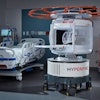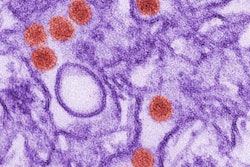
New research from the United Arab Emirates (UAE) designed to gauge whether audiovisual e-resources can help patients understand imaging procedures before undergoing examinations has led to validation of these aids among radiology staff.
The authors pointed to the need for communication about patient preparation prior to certain radiological exams and explained that while patients are usually informed verbally, staff sometimes lacks the opportunity to ensure that individuals are aware of the requirements. Also, they recognize that although some information is available in Arabic on the internet, it is not always reliable. Furthermore, the issue of literacy among the population means not all patients can read and understand what is presented to them.
The research group based at the University of Sharjah believes the next step will be to test these web tools on radiology patients before procedures.
The study, "Developing and testing an electronic literacy resource for Arab patients before experiencing radiology procedures," therefore aimed to develop online patient-friendly resources about imaging procedures in Arabic. It also evaluated the source materials in terms of "understandability" and the level at which patients could identify and act on pre-exam requirements, in other words, "actionability," according to lead author Mohamed Abuzaid, PhD, writing in the Journal of the Egyptian Public Health Association (September 2016, Vol. 91:3, pp. 109-114).
The key results are shown in the tables.
 Understandability and actionability scores for Patient Educational Materials Assessment Tool for printable materials (top) and audiovisual materials (bottom). SD = standard deviation.
Understandability and actionability scores for Patient Educational Materials Assessment Tool for printable materials (top) and audiovisual materials (bottom). SD = standard deviation.Improving service quality
"The materials that were used to create the electronic literacy resources are what patients are normally told prior to radiological procedures. However, they are usually informed in a verbal manner, so the research focused on providing an electronic, online version," Abuzaid told AuntMinnieEurope.com in an email. "The lack of Arabic literacy and reliable online resources that we are facing in the region hampers patient education and instruction. This paper has created an outlet for anxious patients or anybody wanting to learn about the procedures prior to their appointment to resolve any doubts."
 Mohamed Abuzaid, PhD, from Sharjah, UAE.
Mohamed Abuzaid, PhD, from Sharjah, UAE.He believes that patient education is a crucial part of high-quality healthcare.
"Providing education via online resources, especially videos, will improve the standard of the service," Abuzaid noted. "I hope that this research brings a change in the methods used in educating patients prior to radiological examinations."
The study was conducted at the University of Sharjah between October 2014 and July 2015. Fifteen selected radiology experts across eight different hospitals evaluated texts and audiovisuals via questionnaires for 21 medical imaging procedures. These resources were accessible on a website specifically created for the study.
Of the fifteen participants who were bilingual in Arabic and English, 66.7% were radiologists and 33.3% were technicians. In terms of gender ratio, 73.3% were male and 26.7% were female. A total of 28 evaluations were completed, as 13 of the evaluators assessed the text and audiovisual resources for two full procedures, whereas two participants could assess only one procedure. Resources were evaluated with automatic score calculation using the Patient Education Materials Assessment Tool.
Although educational materials for 21 procedures were created, experts randomly chose and evaluated only 19 of them. These 19 procedures were evaluated either once or twice, resulting in understandability and actionability percentage scores for each procedure's printable and audiovisual materials. If the materials for a procedure were evaluated twice, the average of the two percentages was calculated during analysis.
For printable materials, the mean understandability percentage score was 92.37 (SD = 8.355) and actionability score was 92.11 (SD = 13.157). For audiovisual materials, the mean understandability score was 97.63 (SD = 13.157) and the percentage for all actionability scores was 100%.
"The high percentages scored for the online materials indicated the evaluators were satisfied with the materials included and that the information would be easy for patients to understand and follow. The higher scores for the audiovisual materials indicated they were considered more effective for improving patient knowledge," Abuzaid et al stated.
Clear information
The website was designed so patients could choose the relevant procedure from a list or by clicking on the appropriate body part of an interactive human body model.
The online visual resources comprised three- to four-minute video clips in Arabic with a background narrator presenting information on what exams would involve and also what the patients must do -- or should avoid doing -- before procedures. The information covered pre-exam requirements, procedural steps, and postprocedural care. In addition, benefits and risks associated with the specific procedure, as well as medications used, were presented.
With regard to format, the voice-over was accompanied by still photos and simple illustrations. Photos showed patients and staff in dialogue, positioning of patients on the table, and the machines and materials involved. The diagrams depicted body systems, and schemas of how the imaging would take place; some labeled machines and materials, such as contrast media. In addition, certain images and sections of the voice-over were complemented with simple bullet points in written format. A selection of the visual materials can be seen on youtube via this link.
In comparison, the text materials for 21 procedures were divided by body area, including head and neck, spine, chest, abdomen and pelvis, and extremities. The printable materials consisted of several sections under subheadings including patient preparation, procedural steps, postprocedural instructions, and finally, procedure-related side effects and complications. These materials can be seen on the University of Sharjah Medical Diagnostic Imaging PACS domain.



















